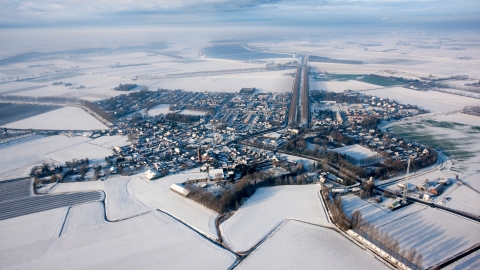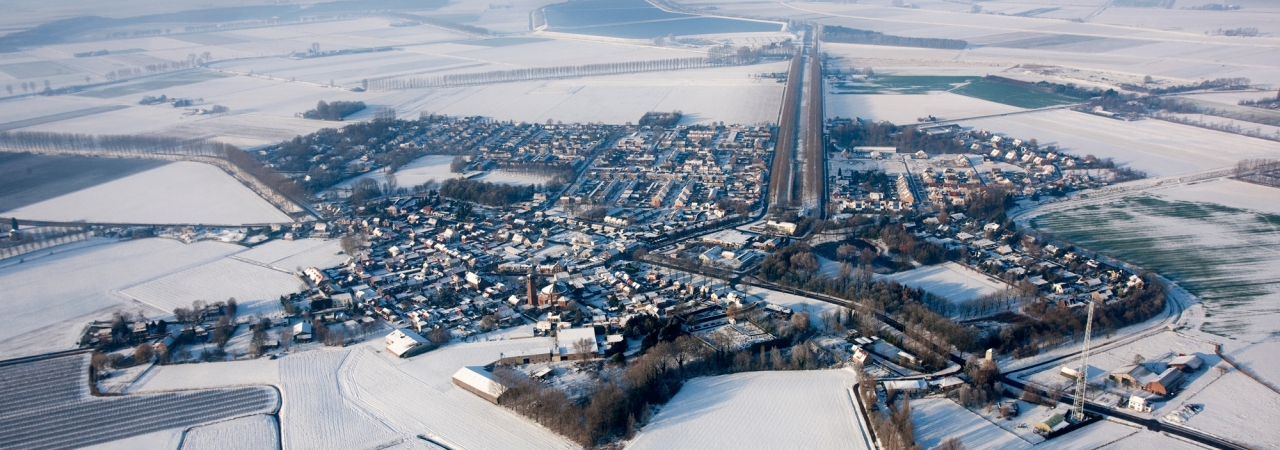In 1505, the Flemish Count Filips de Schone approved the establishment of a closed town on the southern bank of the Braakman. Some 80 years later, there was probably not much more than a hamlet here, but that hamlet formed the basis for the stronghold of Philippine.
When Alexander Farnese, the later Duke of Parma, invaded northern Flanders in 1583 to recapture this region for the Spanish king, he decided to build a redoubt in this place on the Braakman: the Sint-Philip redoubt. The redoubt lay in a strategically important place: on deep water (and thus a potential landing place for enemy troops) and opposite the Land of Axel, which had recently been captured by the States.
Sint-Philip was a small, probably triangular redoubt with bastions. The occupation was small, so that Prince Maurits faced little resistance when he landed here with an enormous army in 1600, on his way to Duinkerken to chase off the privateers, which would result in the Battle of Nieuwpoort. After that battle, the States left the area and destroyed the redoubt. The Spaniards returned and rebuilt the redoubt into a square fortification with a bastion on each corner.
In 1633, the redoubt was definitively captured by States troops led by William, Count of Nassau. In that same year, the Spaniards attempted to recapture the redoubt. By means of a ruse, Count William managed to scupper this attempt. During the night, several ships crossed the Braakman from Biervliet in the direction of Sint-Philip with 60 drummers on board. The drummers were ordered to make as much noise as possible. When the Spaniards heard this, they thought that a big army was approaching to help those under siege and fled as quickly as they could.
The States expanded the redoubt into a real stronghold which served as a base for attacks on Spanish territory. The new stronghold was given the name Philippine. The original Spanish redoubt was kept as the core of the stronghold and was called “Castle” or “Hoog-Philippine”. On the east, west and south side, a trapezium shaped extension was built with two half bastions on the northerly corners and two whole bastions on the southerly side. The whole fortification was surrounded by a moat with counterscarp. Between the southern bastions, there was a ravelin in the moat. Near the Castle was the harbour.
At this time, the stronghold also had a civilian population.
Where both sea dykes were connected to the outer embankments on both sides of the stronghold, locks were constructed. By way of extra security when war threatened, the land south of the stronghold was flooded (inundation) via these locks.
The locks were guarded by extra defence works between the stronghold and the locks, in the west through a flèche and the east through a traverse. During the same period when these works were built (1692-1693), on the south-eastern side, a second ravelin was constructed in the canal.
After the French occupation (1747 – 1748) during the War of the Austrian Succession, further improvements were made. In particular, the north-eastern corner was considerably extended. For the flèche and traverse, stone bears were built. A stone bear is a brick dam which was supposed to take over the flood barrier function of a dyke. The enemy can easily approach a stronghold over a dyke, but this made it much more difficult, if not impossible. A stone bear always has a saddleback top, a capping. Soldiers could only move to the other side one by one, in a straddling motion. This meant they were easy targets of gunfire.
In 1816, the stronghold was definitively abandoned, but it was opened again during the Belgian Separation (1830). Not much of the stronghold remains. However, the layout of the stronghold is still quite easy to recognise from the air. The street plan of the centre is still original. On the south, southeast and northwest side, the remains of embankments and canals can still be recognised from the mounds and dips in the land. Here and there, it is also possible to find water-retaining remains of the moat. The stone bear on the east side (the Oostbeer) is well preserved and was restored in 2013.


